Pianono is the Filipino version of the Swiss roll or jelly roll cake. The traditional pianono is filled with butter and sugar but you can find different kinds to satisfy all your cravings — cakes with custard filling, with yema filling and even dulce de leche. Delicious with coffee in the morning or as an afternoon snack.
(Fan of roll cakes? Try Brazo de Mercedes, a pillowy meringue roll filled with rich custard, Ube Roll Cake, tender ube cake with whipped cream cheese frosting, or this classic Vanilla Swiss Roll filled with light whipped cream.)
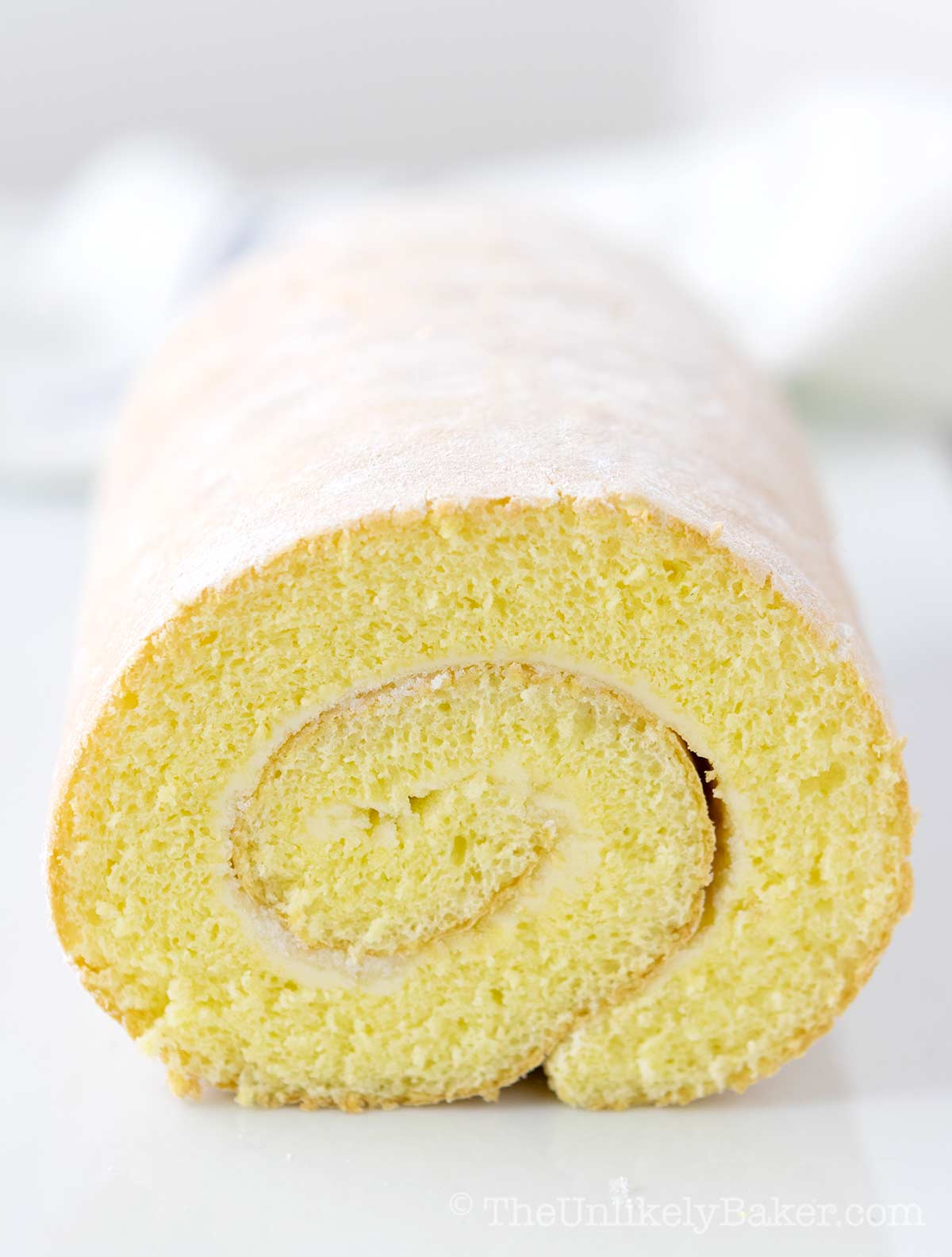
Pianono or pianono roll cake is a popular Filipino snack, although you can also find similar treats in Spain, South America, Cuba and Puerto Rico.
In the Philippines, it’s available in most local bakeries, usually sold in individual slices, and although it’s called a cake, it’s considered more like bread or an everyday sweet snack than a dessert cake that you serve at celebrations.
You can trace its origins to pionono, small pastries from Santa Fe in Grenada, Spain. It’s named after Pope Pius IX’s Spanish name, “Pio Nono”.
You can read all about the cake’s delicious history here.
Why this recipe works
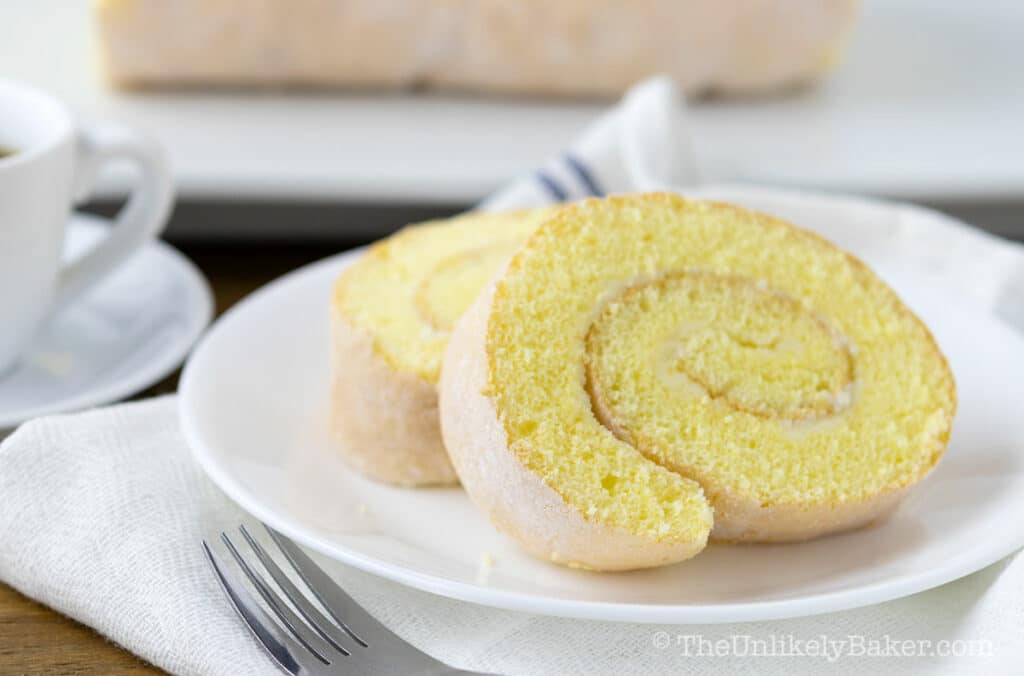
Pianono is a childhood favourite and I love baking it. From the soft and fluffy sponge cake roll to the butter and sugar filling — it’s simple, delicious and tastes just like the ones from home.
You’ll enjoy making this recipe too because:
- It has simple easy-to-find ingredients. You probably already have them in your pantry, like flour, baking powder, sugar, salt and eggs.
- The recipe is easy to follow. I give lots of tips to help you get that perfectly firm but tender cake texture that won’t break when you roll it.
- You can customize the filling. Go the traditional route with butter and sugar or fill it with whatever you like, from coco jam to Nutella. You can even flavour the cake itself. For example, add ube extract for ube pianono or coffee to make a mocha roll.
(Love chiffon cakes? Try this mamon recipe! Soft, tender, easy to make.)
Ingredients
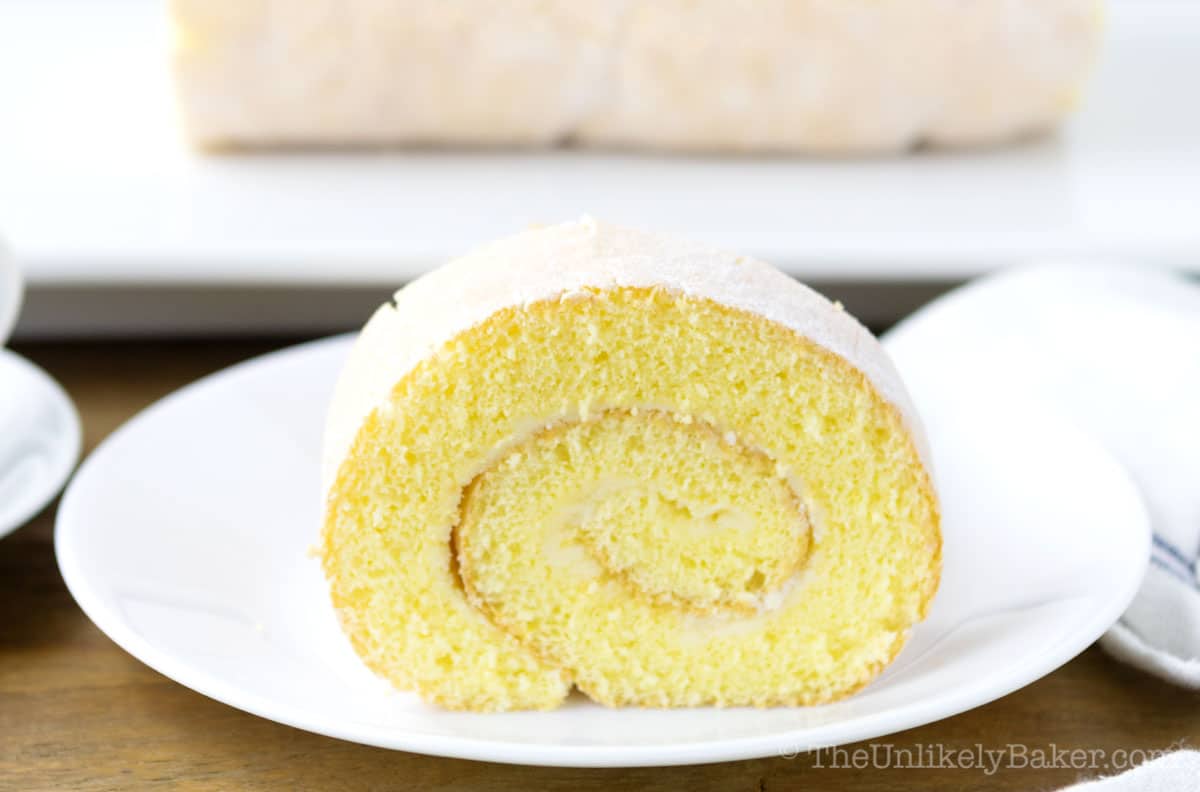
Like I mentioned above, this pianono recipe uses pantry staples but I do want to make notes about some of the ingredients:
- Cake flour — I use cake flour here to achieve a more tender and lighter texture. If you only have all-purpose flour, you can still use that but note that it’s not a 1:1 substitution. You’ll need to add cornstarch into the mix. Here’s a great reference on how to make your own.
- Confectioner’s sugar — Note that we use confectioner’s sugar (also sometimes called icing sugar or powdered sugar) to dust the pianono before rolling it. This is different from granulated sugar or white sugar. If you don’t have confectioner’s sugar, you can make your own by adding 1 tablespoon of cornstarch to every cup of sugar and blending or pulsing it in the food processor until the sugar is powdery.
- Room temperature eggs — Remember to use room temperature eggs. This is especially important when making the meringue. Cold eggs make it harder to achieve stiff peaks.
Baking tools
- Jelly roll pan — I’ve found that this recipe works best using a 10×15 inch jelly roll pan. Any larger than that and your cake will be too thin. If you don’t have that, a 9×13 inch baking pan would work too.
- Electric mixer — I use an electric mixer to whisk my eggs. You can always whisk eggs (yolks or whites) by hand; I just don’t have the patience or arm strength for it lol.
- Kitchen scale — I always recommend using a kitchen scale when measuring ingredients, especially when baking. It leads to better and more consistent results.
- Oven thermometer — An oven thermometer is essential for me too. I have two hanging in my oven at all times to ensure I’m baking at the correct temperature every time.
How to make the cake batter (with step-by-step photos)
Now that we have that covered, let’s get baking.
First you’ll want to whisk your egg yolks on high speed for a minute. Then gradually add sugar until the mixture is pale and thick.
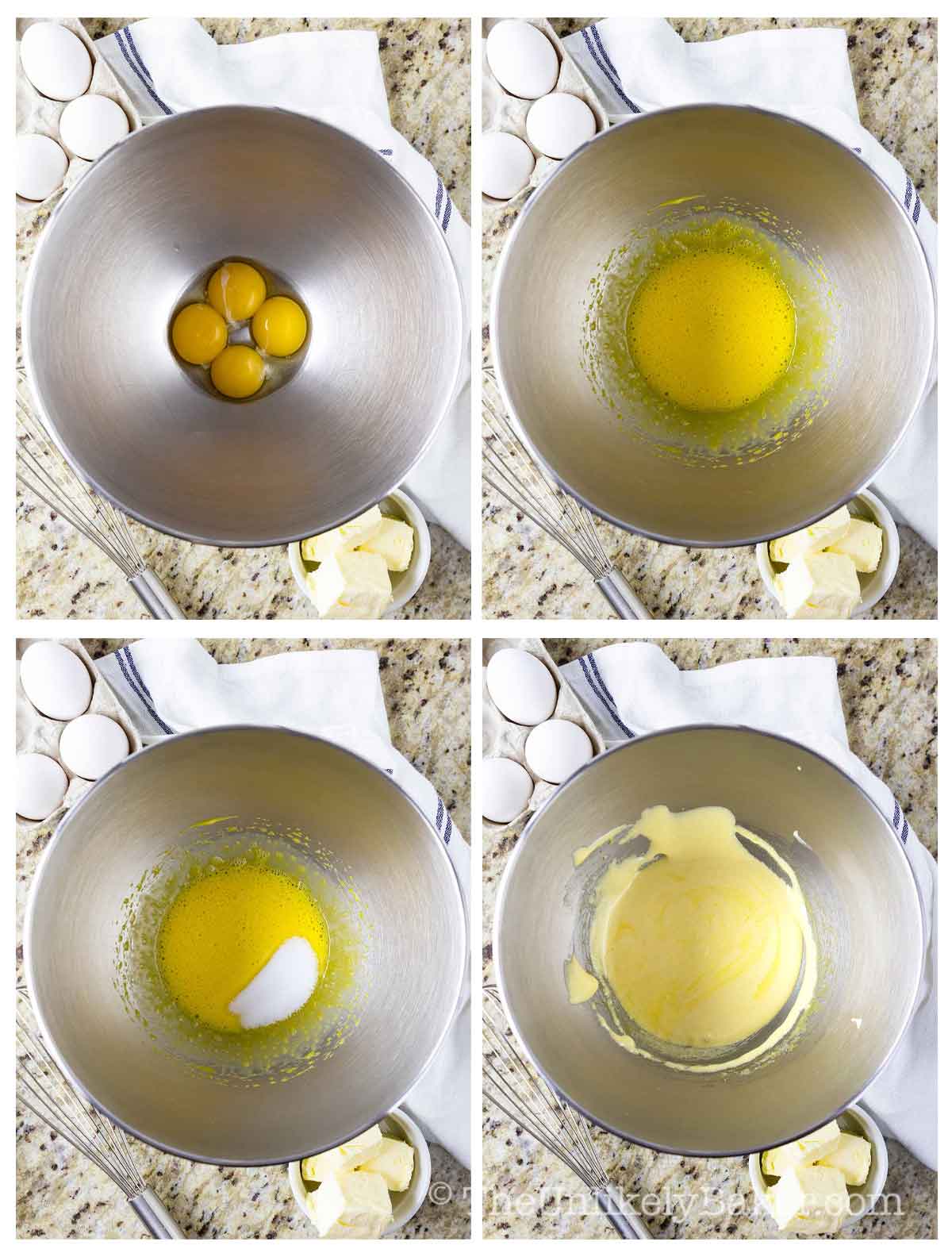
Switch to low speed and add flour gradually. Beat until smooth and incorporated.
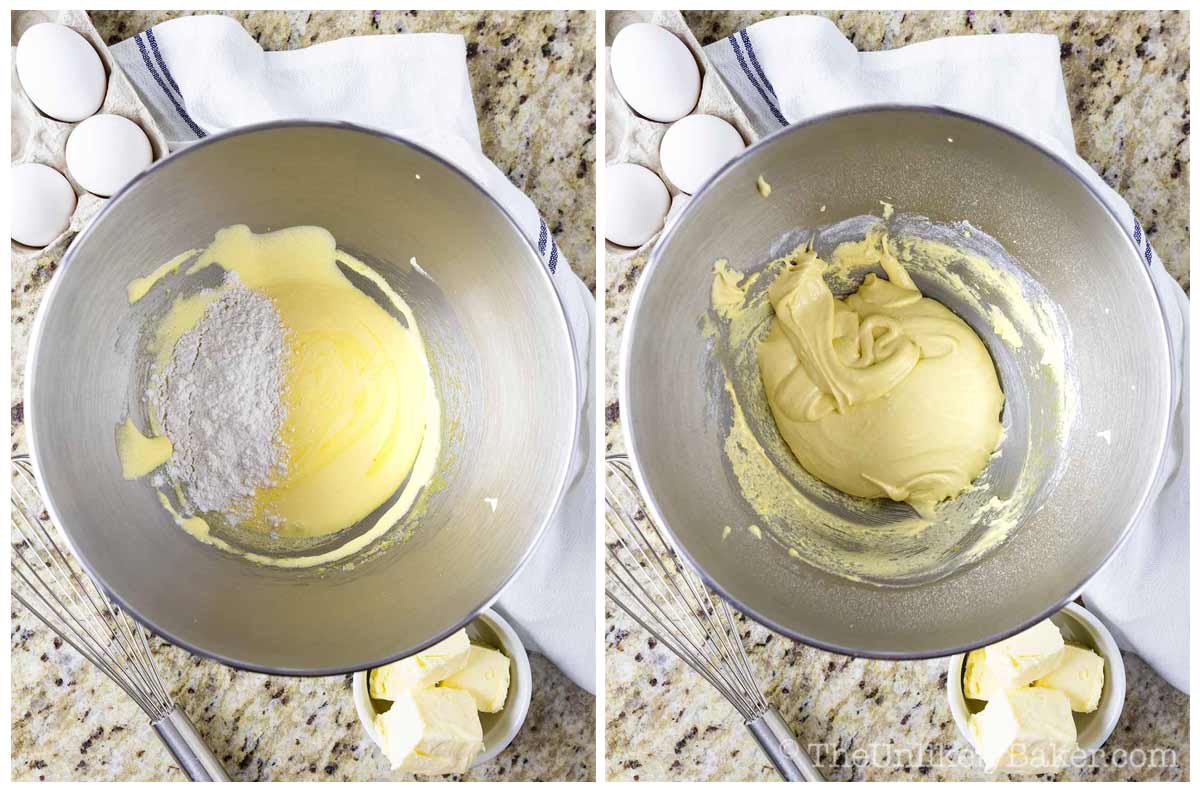
Set that aside while you work on your meringue. Beat egg whites and cream of tartar until frothy. Then gradually add sugar until you get medium-stiff (but not dry) peaks.
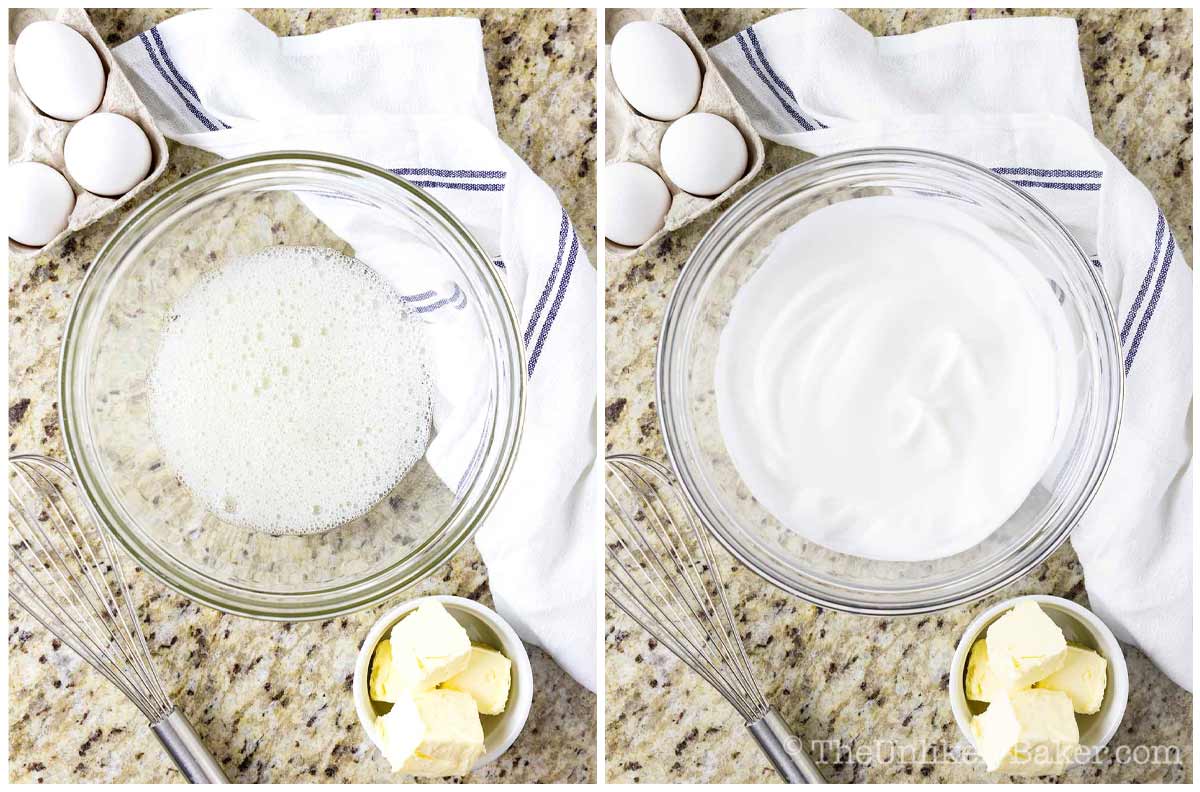
Fold about a cup of your meringue to your batter to lighten it; then fold the rest in until well blended.
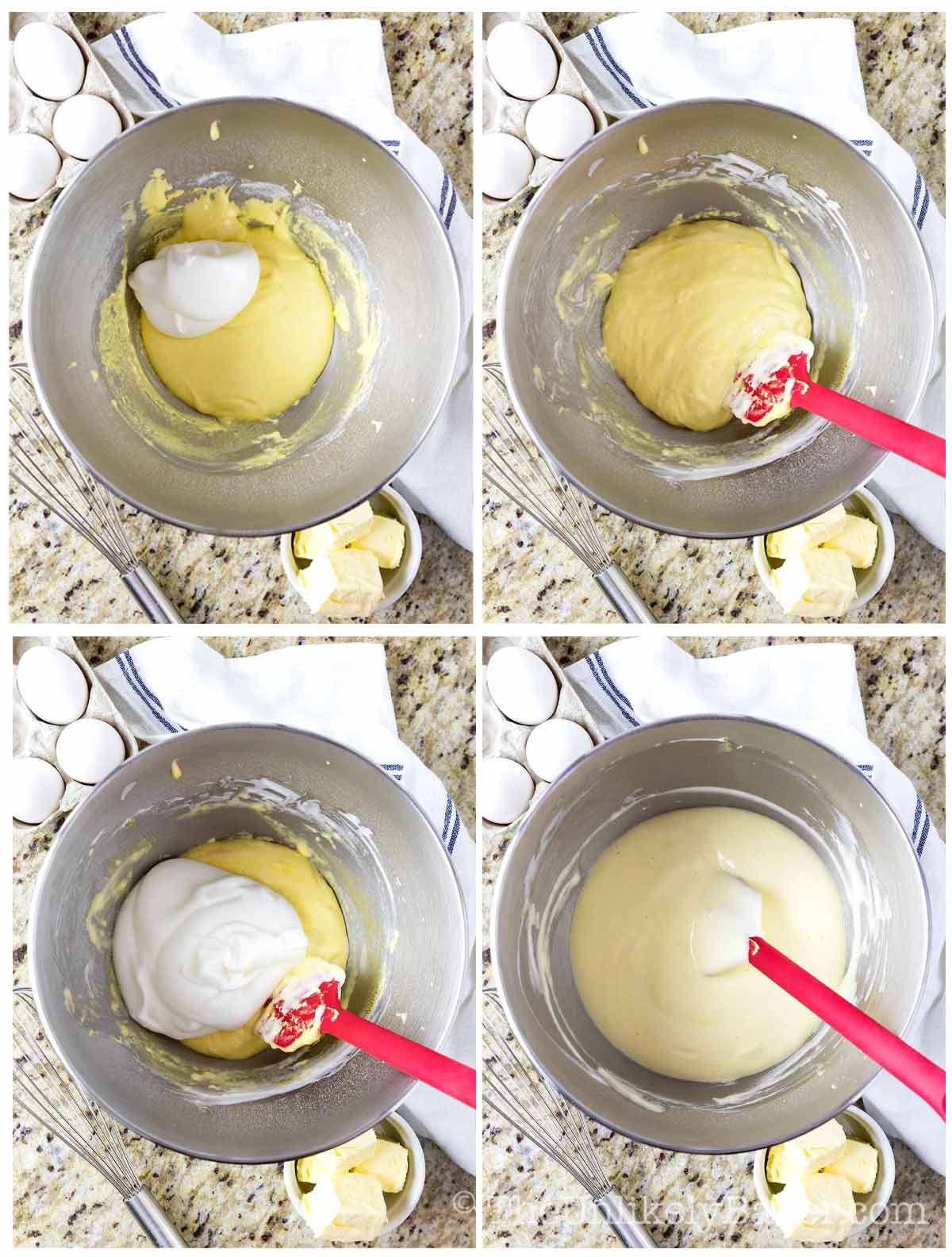
Transfer the cake batter to your prepared pan, spread evenly, and bake at 375F for 10-15 minutes or until it springs back when lightly pressed. If parts of the cake sticks to your finger, you need to bake it some more.
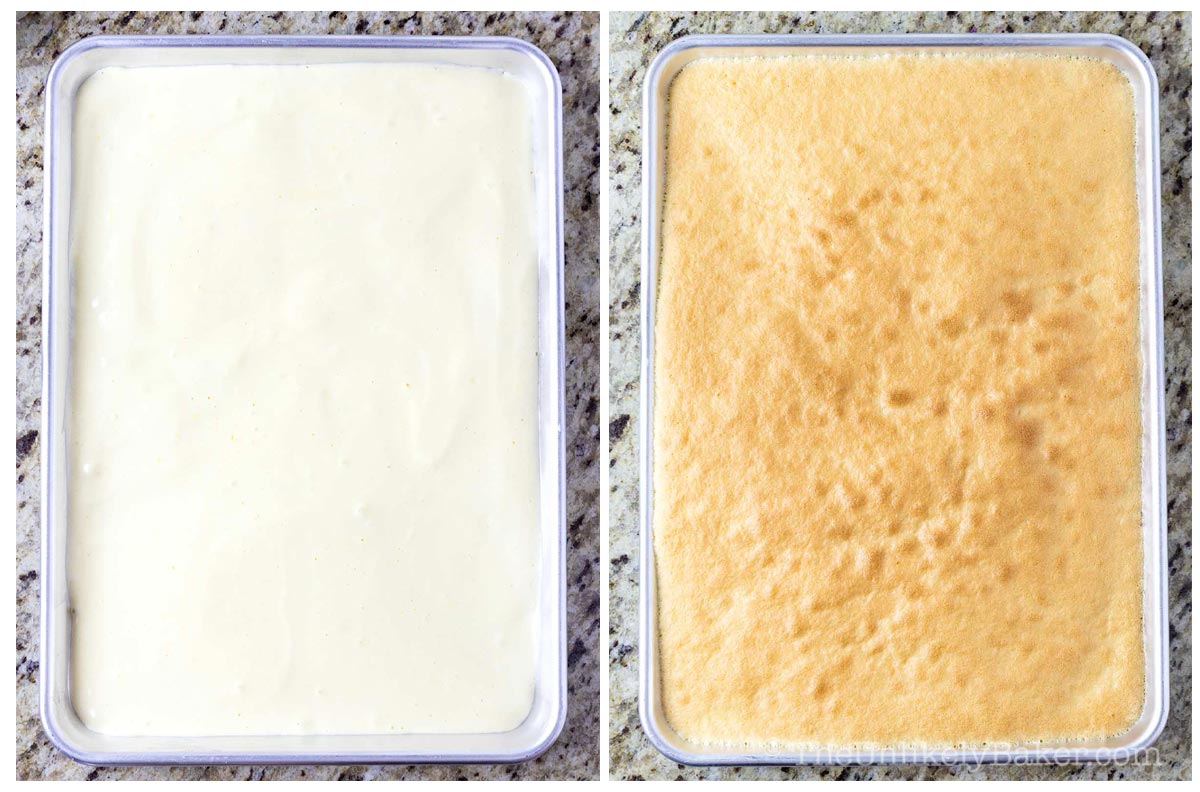
How to roll and fill (with step-by-step photos)
While the cake is still warm, run a thin sharp knife around the edges of the pan to release it, sprinkle the cake with confectioner’s sugar, cover with a clean kitchen or tea towel, then flip.
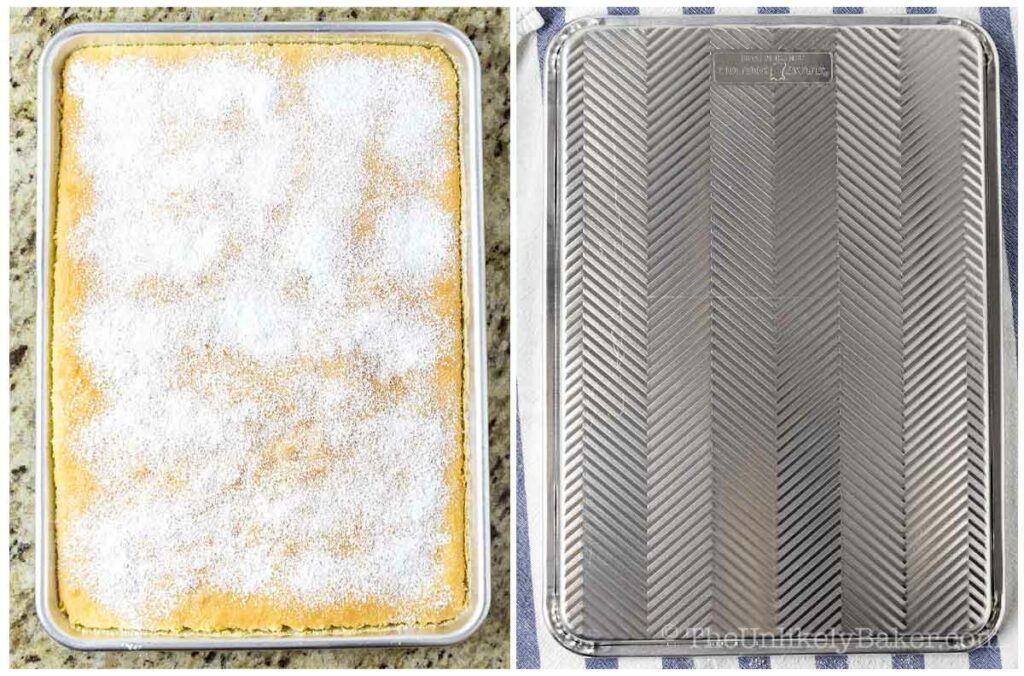
Lift pan, peel off parchment paper and gently roll the cake. Place it on your counter seam side down and allow it to cool completely.
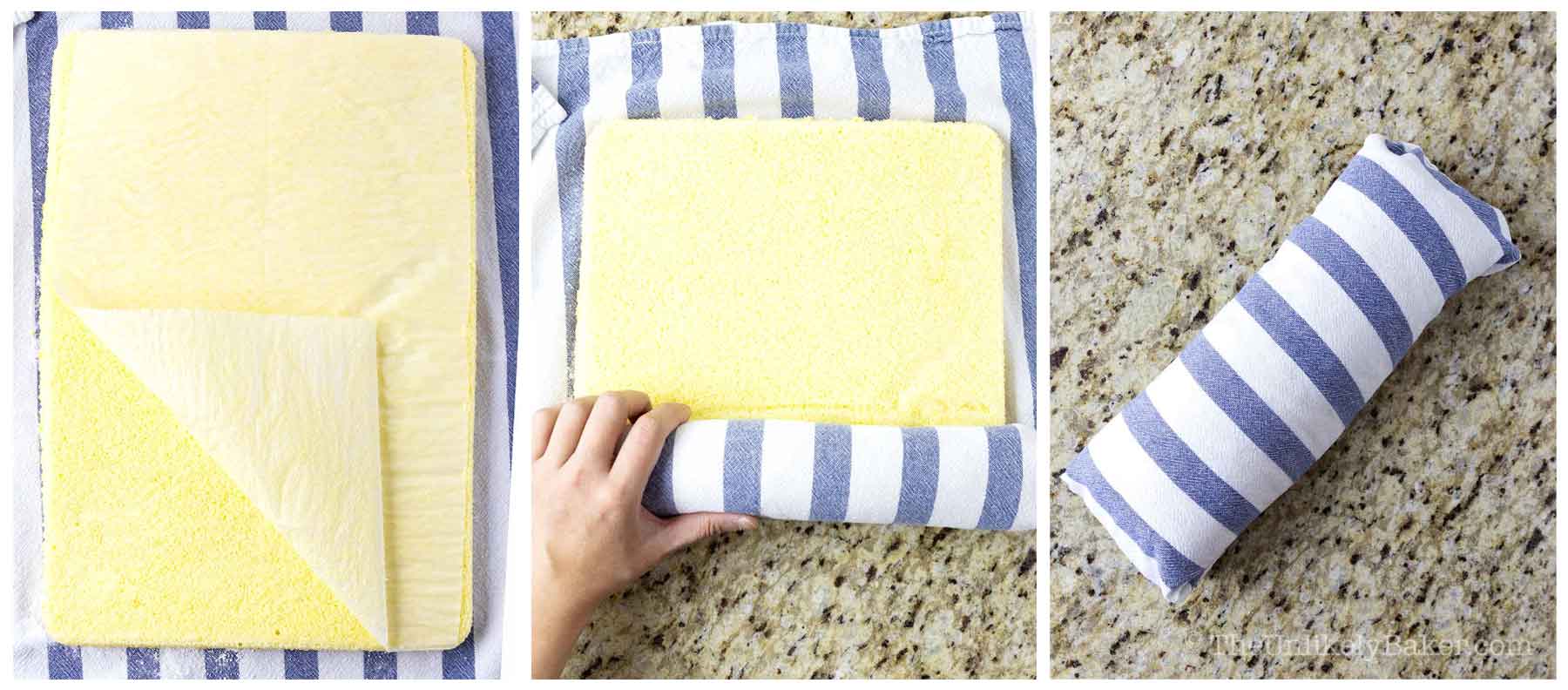
When ready, gently unroll the cake, spread softened butter, and sprinkle granulated sugar. Re-roll and refrigerate at least an hour before serving.
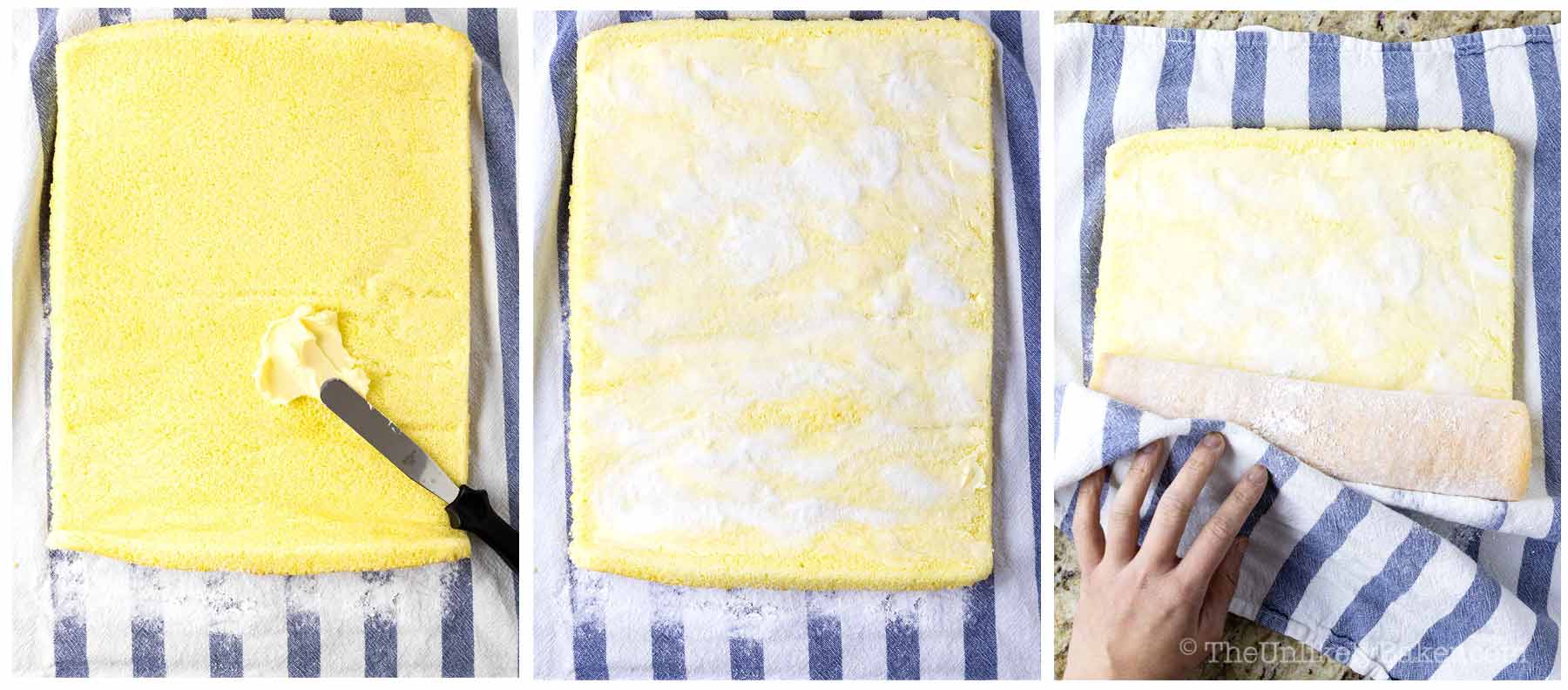
Baking tips
Bake perfect pianono rolls every time by following these tips.
Making meringue
Meringue is tricky but do these and you’ll be a meringue master in no time.
- Use room temperature egg whites. It’s easier to separate the eggs while they’re cold so do that with eggs straight from the fridge then keep the whites on your counter and allow them to come to room temperature.
- Make sure there is no speck of egg yolk in your egg whites. Best to separate the eggs in a different bowl then transfer the whites to the bowl you’re using to make the meringue.
- Make sure your whisk and bowl are dry and oil-free. For good measure, I wipe them with a paper towel dipped in vinegar before using. Also avoid using a plastic bowl because they can hide traces of oil that’s hard to remove.
- Beat your egg whites on low-medium speed. Using my KitchenAid stand mixer, I go no higher than speed 3 when making meringue. This takes longer but makes the meringue more stable. Over beating the whites or beating them too quickly results to big air bubbles that tend to burst, resulting to deflated meringue.
- Handle the meringue gently. You don’t want to fold all of the meringue into your batter because you’ll end up over mixing it. So lighten the batter first by adding about a cup of meringue into it, before adding the whole batch. Then fold gently to retain that light and airy texture.
Rolling the cake
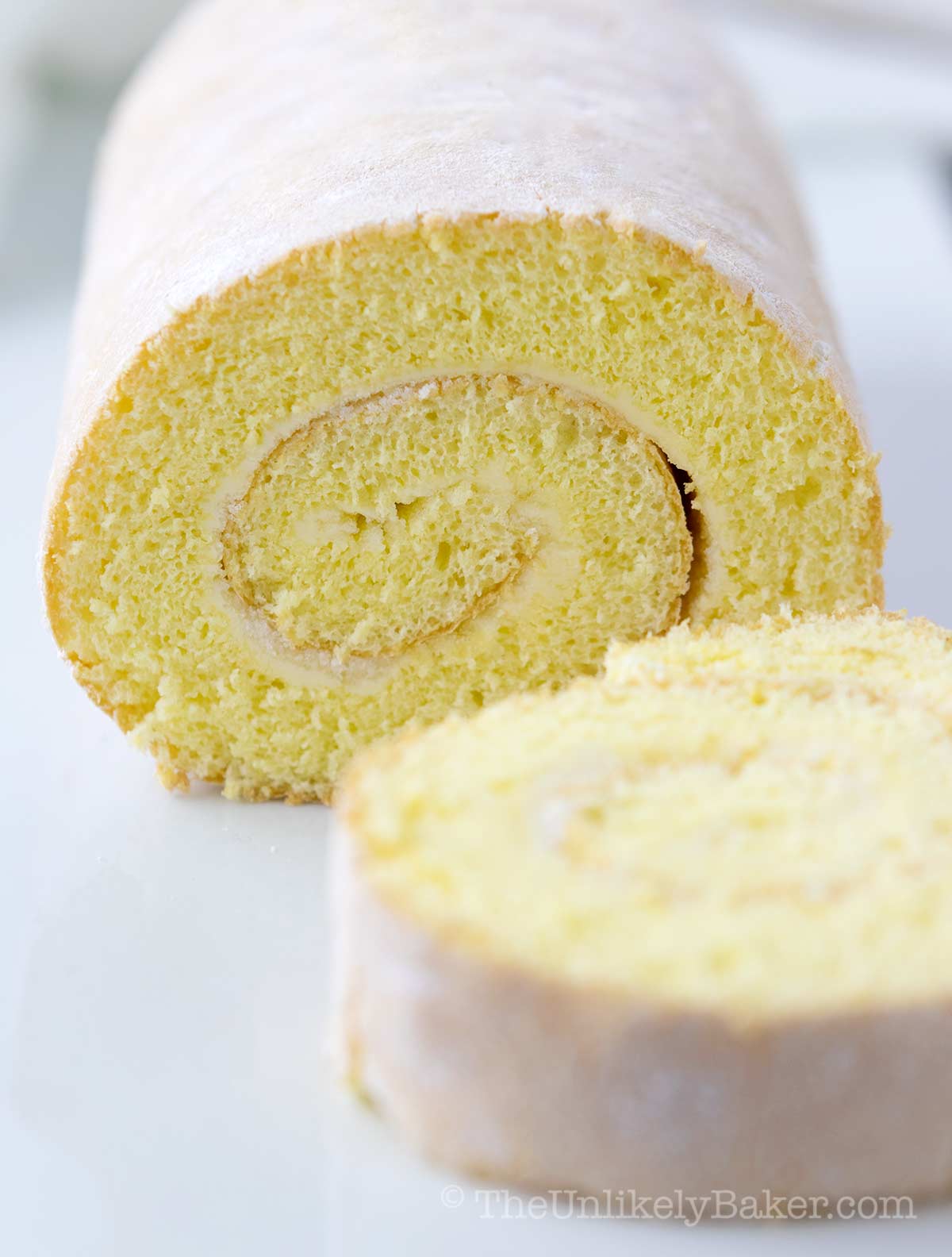
Rolled cakes are notorious for cracking when rolled. But we can take some steps to increase the chances of a crack-free cake.
- Don’t over bake. You want a cake that’s nice and moist with a tender texture. A dry pianono will almost certainly crack when rolled. Remember that baking time differs per oven so it’s always good to check before the suggested time to see how much longer you need to go.
- Roll the cake while it’s still warm. I usually do this within 2 minutes of taking the pan out of the oven.
- Use a kitchen towel to roll the cake. A towel is soft and flexible, helps to absorb moisture while cooling, and easier to handle than parchment paper.
- Handle gently. When rolling the pianono, you want it rolled tightly to keep its shape, but try not to press or squeeze too hard.
Did your pianono still crack? No worries. It adds to the charm and it will still be delicious.
Storage and shelf life
Pianono is best eaten within 3 days of baking (while still wrapped).
Once unwrapped, best to eat the same day. You can serve it chilled or at room temperature.
Frequently asked questions
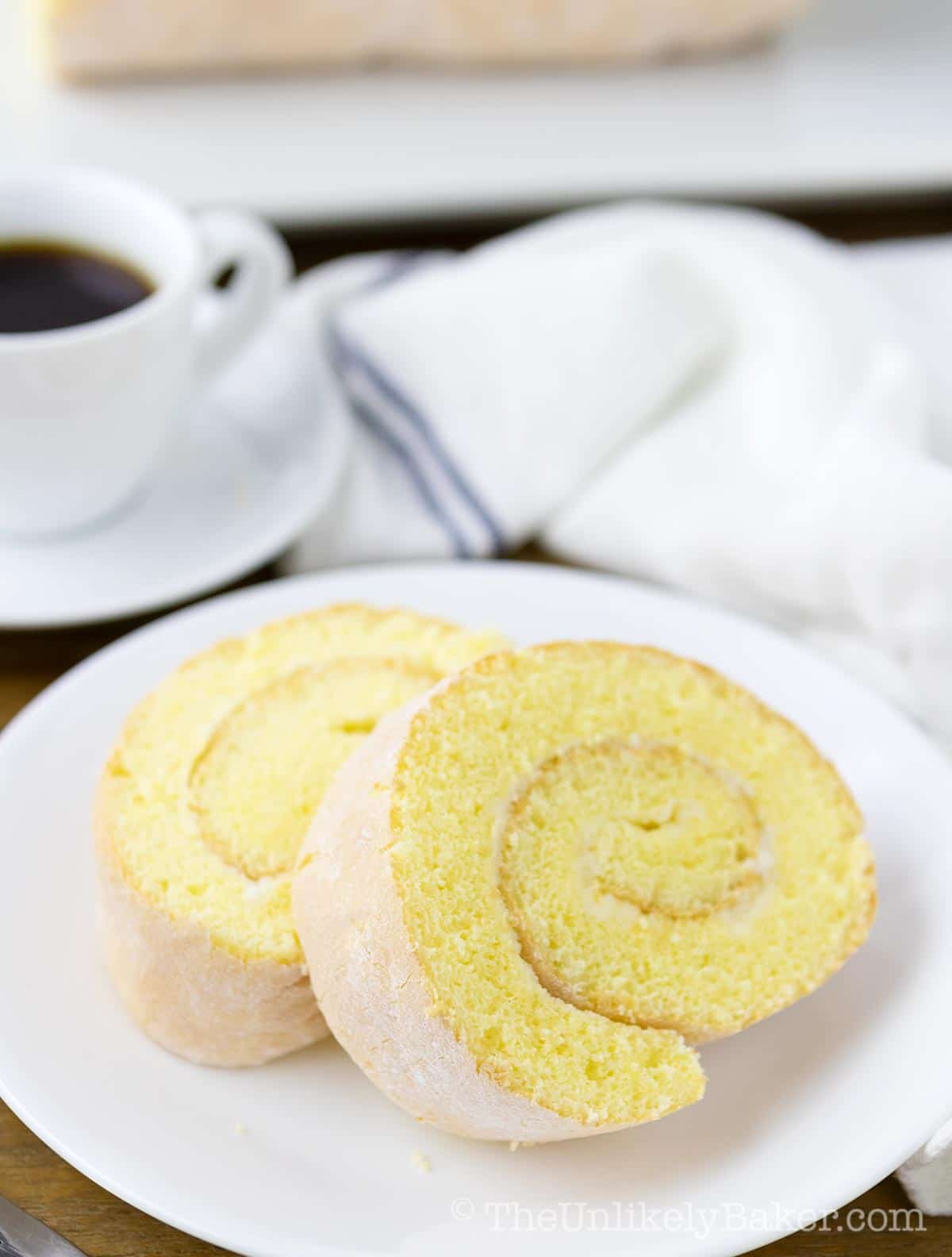
Some deflation is normal and even expected but if your cake deflates by a lot, it’s most likely due to unstable meringue. See tips on how to work with meringue above.
There are several factors that contribute to rolled cakes cracking.
– Over-baking. Remember that the pianono starts off as a very thin cake so it only takes 10-15 minutes to bake. Check it sooner and watch closely — once it turns a light golden brown and the top springs back when gently pressed, it’s done.
– Not rolled soon enough. This cake is best rolled while it’s still warm and pliable. It’s more likely to crack when it has cooled and already firmed up.
– Pressed too hard. Remember to handle the cake gently when rolling. Press or squeeze too hard and it might crack and break.
See tips above for a crack-free cake.
You can, but I don’t recommend it.
A kitchen towel is ideal because it’s softer, more flexible and the cake is less likely to stick. It will also absorb some of the moisture coming from the cooling roll.
If you want to use parchment or wax paper, ensure that you’ve dusted the cake thoroughly with confectioner’s sugar before flipping.
I prefer to use cake flour instead of all purpose flour to achieve a lighter, less dense cake. But if it’s not available, you can substitute all purpose flour. See the ingredients section for more details.
I always use cream of tartar when making meringue but there are acceptable substitutes like lemon juice and vinegar. Check this out to find out more.
You can absolutely use margarine instead of butter. I think the pianono of my childhood was actually filled with Star Margarine instead of butter, which was more expensive.
Filipino cake recipes
Love to bake Filipino cakes? Check these out and make your celebrations extra special.
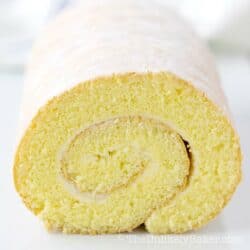
The Best Pianono Roll Cake (Easy Recipe)
Equipment
Ingredients
For the cake batter:
- ¾ cup sifted cake flour
- ¾ tsp baking powder
- ½ tsp salt
- 4 pcs egg yolks from large eggs room temperature
- ½ cup granulated sugar
For the meringue:
- 4 pcs egg whites from large eggs room temperature
- ¼ tsp cream of tartar
- ¼ cup granulated sugar
For the filling:
- ½ cup butter softened
- ¼ cup granulated sugar may need more
- confectioner's sugar for dusting
Instructions
- Preheat oven to 375F. Grease the bottom of a 10×15 inch jelly roll pan and cover with parchment paper. Leave the sides un-greased. Set aside.
- In a small bowl, whisk cake flour, baking powder and salt until well blended.

- In another bowl using a handheld electric mixer or a stand mixer fitted with the whisk attachment, whisk egg yolks on medium-high speed for 1 minute.

- Gradually add sugar until the mixture is pale and thick (2-3 minutes).

- Switch to low speed and gradually add the flour mixture. Beat until smooth and incorporated.

- In another bowl using clean beaters or whisks, beat egg whites and cream of tartar on low-medium speed until frothy.

- Add sugar a little at a time until you reach medium-stuff (but not dry) peaks.

- Fold about a cup of your meringue into your cake batter to lighten it.

- Then proceed to add the rest of the meringue and gently fold until well blended.

- Transfer batter into prepared pan and spread evenly.

- Bake for 10-15 minutes or until golden brown and the top springs back when gently pressed.

- Bring the cake out of the oven and run a thin sharp knife around the edges.
- Sprinkle with confectioner's sugar, cover with a clean kitchen or tea towel and carefully flip.

- Remove the pan, peel off the parchment and roll. Place seam side down on your counter and allow to cool completely.

- When ready, unroll the cake, spread softened butter, sprinkle sugar and re-roll. Chill at least an hour before serving.

Video
Notes
- The yield depends on how thick or thin you slice the cake. Estimated nutrition values are based on 8 slices.
- If you don’t have a jelly roll pan, you can also use a 9×13 inch baking pan.
- Make sure you use softened butter that can be spread easily. Either salted or unsalted butter works.
- You may need more granulated sugar for sprinkling to ensure the whole surface of the pianono is covered.
- See post for lots more baking tips, FAQs and step-by-step photos.
Nutrition
Nutritional information are estimates only.
Happy baking!
Did you make this Filipino Swiss roll? I’d love to hear from you in the comments section below.
And let’s get social! Find me on Facebook, Pinterest, Instagram, Twitter and YouTube.

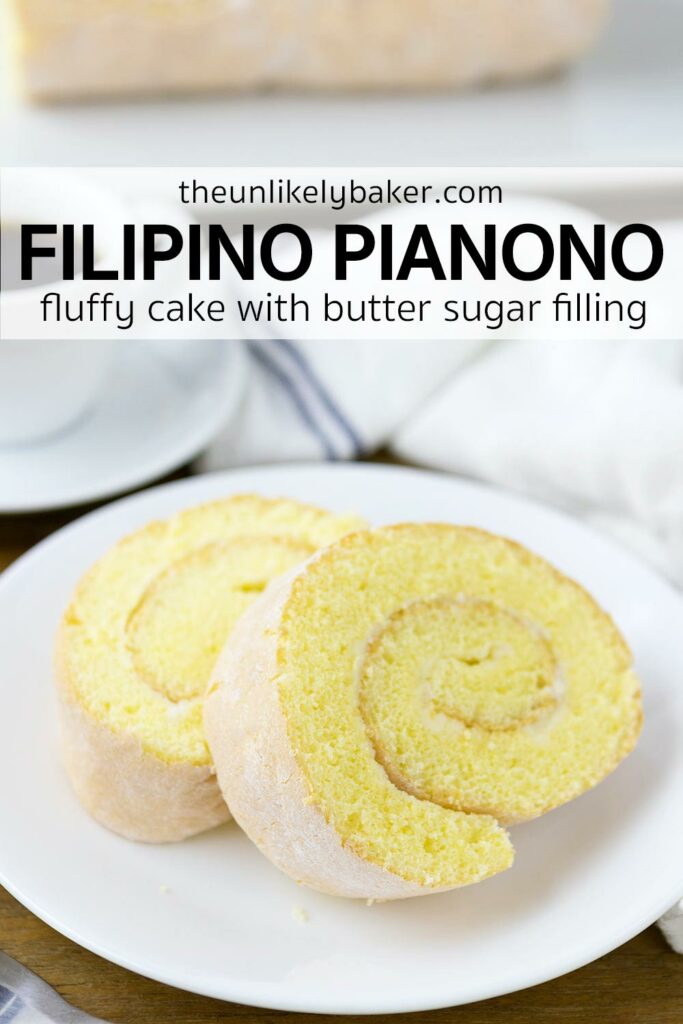
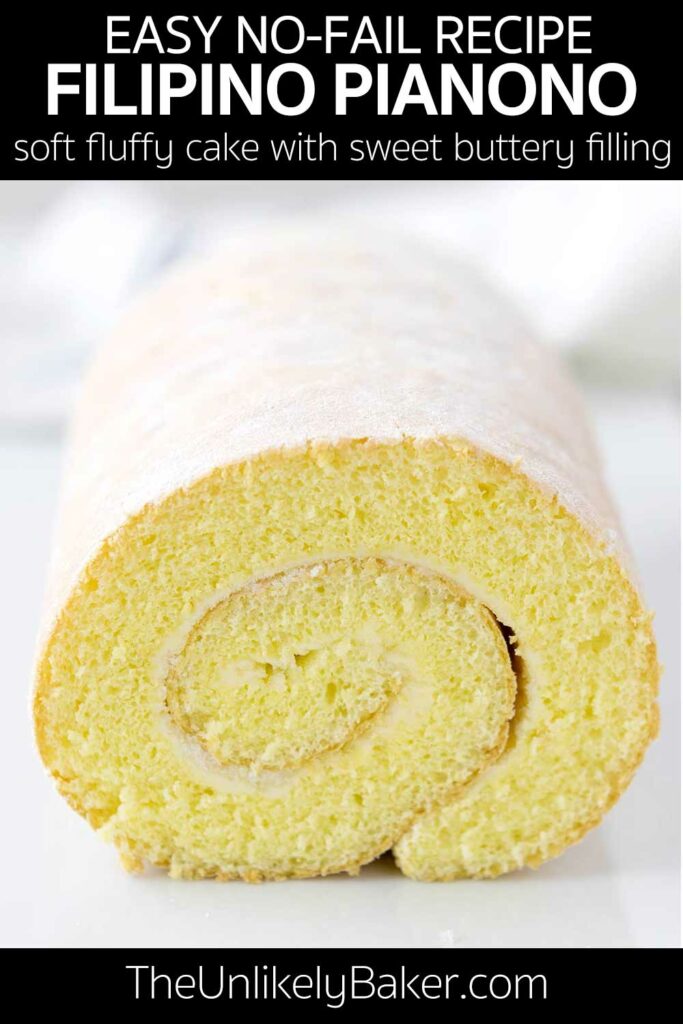
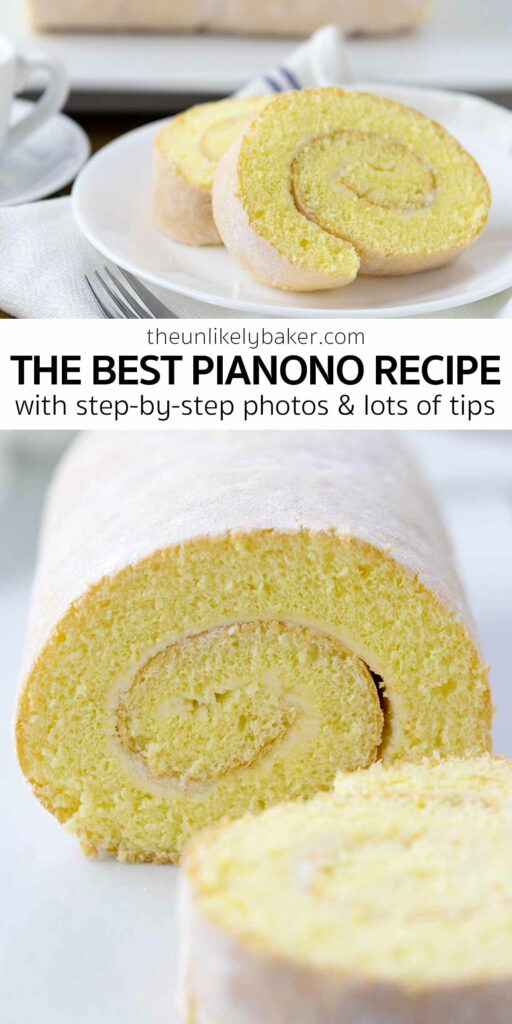
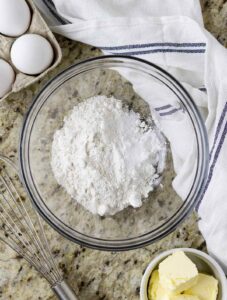

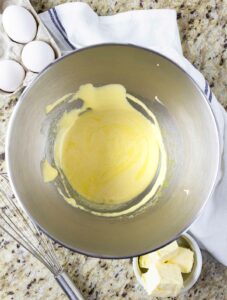
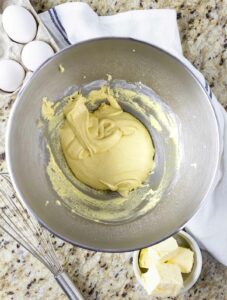
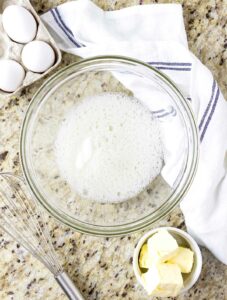
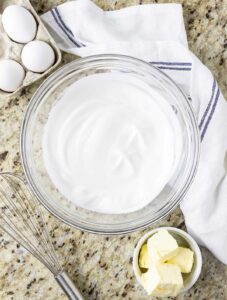
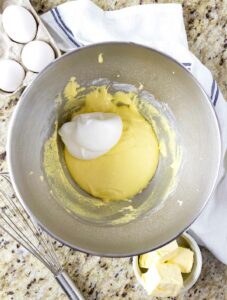
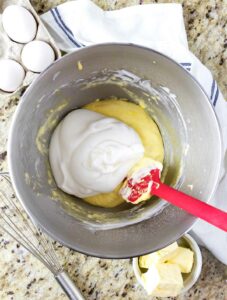
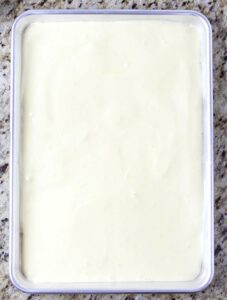

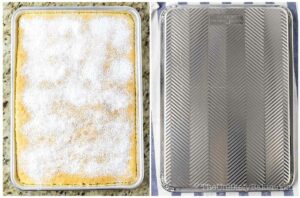
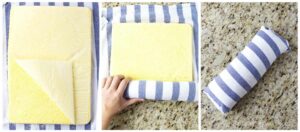
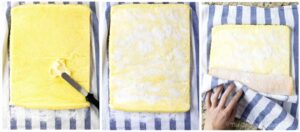
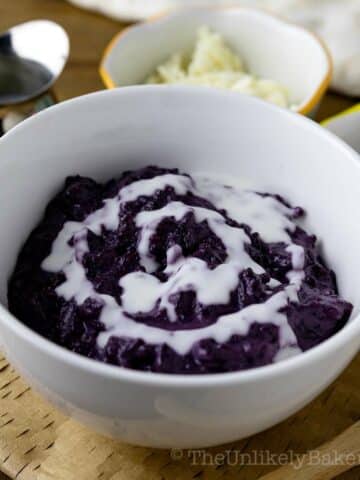
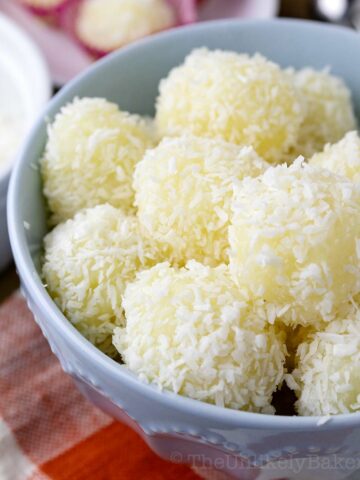
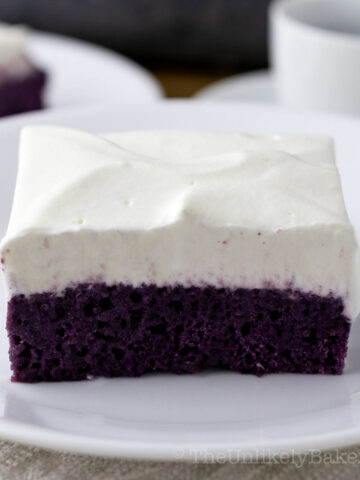
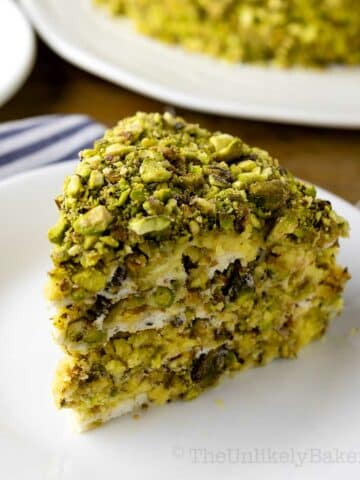
Lea
The only missing is the milk for the cake batter, I was surprised, when I mixed it it was too dry, I have to look for other ingredients. It needs 1/2 cup of milk for the batter. I added vanilla also.
Jolina
Hi Lea, glad you made the recipe work for you. This recipe really doesn’t contain milk, like a traditional sponge cake. The eggs do most of the work.
Veronika
This cake was easier to make than I thought it would be and it came out really fluffy and delicious!
Jolina
Hi Veronika, glad you liked it! It’s really easier to make than it seems 🙂 Enjoy!
Linda
This reminds me of my childhood cake and I can’t wait to make this one. It looks so smooth and delicious!
Clarissa
This is a great recipe! I made pianono for valentine’s and it came out delicious. I had issues with the rolling and my cake cracked (!!) but it was still delicious. Will do again and again.
Jolina
That’s awesome Clarissa! Glad you liked it! It does take practice when it comes to rolling pianono but it’s a delicious way to learn 🙂
Badette
What a beautiful cake. Reminds me of the jelly rolls of my childhood. It looks light and delicious!
Elizabeth
This looks absolutely delicious. I have always enjoyed different types of cake rolls. Love how simple the filling is so you can really enjoy the cake!
Melanie Edjourian
This sounds so yummy. I do love these types of cake. I’m not good at rolling them though.
Kathy
This looks amazing! The step by step photos really help simplify the process. Can’t wait to make it!!
Gervin
Pianono is one of my favorites and it’s really delicious!!
Jolina
Mine too! Love how simple it is 🙂
Brianne
ROlling and filling was the most difficult part for me but overall I enjoyed making this roll cake
Jolina
Glad to hear that Brianne! I enjoy the rolling actually 🙂
Lisa
I’m not an advanced baker but I really want to make this! You make it look so simple. Thanks for the picture instructions. Will let you know once I’ve made!
Amber Myers
This looks like a cake I’d enjoy! Yum! I love that it’s easy.
Tasheena
This looks like such a fun recipe to make, looking forward to trying this.
Clara
I have always wanted to try baking a roll cake but not having a jelly pan always stopped me. Glad to know I can make one with a 9×13 pan which I have!